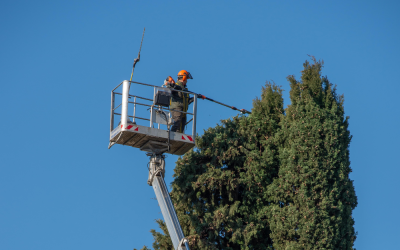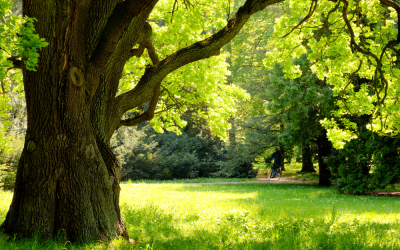If you’ve ever looked up at leafy treetops and wondered “how do trees grow?”, the short answer is in three ways: from their branches, roots, and trunk (which all expand to support continued growth) – but the actual tree lifecycle is far more complex: a grand journey of survival spanning potentially hundreds – even thousands of years. So what do trees need to grow?
It Starts With A Seed
All forms of life are designed to ensure the survival of subsequent generations: for trees, their seeds contain all the resources needed to live independently until they can find a safe place to grow.
The Journey Home
Once the roots are established, a tree can’t travel – but their specially-designed seeds can.
Depending on the species, these are dispersed by air, water, wind, gravity (such as the “conkers” on horse chestnut trees) – or even by force!
Some even get a little help from their friends: travelling on fur, feathers or in the droppings of animals and birds.
Putting Down Roots
Another answer to the question “how do trees grow?” might also be “in two directions”: once a seed finds the right conditions, it develops roots, breaking through the seed to anchor it.
Next, the seed grows an embryonic shoot which pushes up through the soil as a seedling ready to grow even taller – though this is also when the tree is most susceptible to diseases and grazing animals.
But what do trees need to grow? The answer is simple: sun, water and nutrients – including from shoot leaves that remain underground to decay and nourish the growing tree .
The Awkward Phase
Once a tree is over 3 feet tall (depending on the species), it becomes a sapling (or in a more colloquial sense, a “treenager”!) with smoother bark than a mature tree and flexible trunks to aid growth.
If they are a species with an extended lifespan (such as yews), they can remain saplings for much longer than shorter-lived species such as peach trees.
Saplings have three main characteristics: they cannot yet produce fruit or flowers, they have smoother bark than mature trees and flexible trunks.
All Grown Up
A tree has reached maturity once it starts producing fruit or flowers. This is also when it is at it’s most productive, although this depends on the species.
While some trees such as rowans produce berries after 15 years, oak trees tend to begin producing acorns at the age of forty, peaking in productivity at around 80-120 years and potentially continuing to produce seeds for another 300 years.
Rooted In History
Trees that surpass the age of other trees in the same species might be defined as ancient when they reach their early hundreds (like the rowan) – or even older, such as the twisting basin bristlecone pines of Northern America, which can grow to be over 5000 years old!
The Cycle Continues
Once a tree becomes a dying or dead tree, this is known as a snag: the final stage of the tree lifecycle.
Even here, trees have a purpose: becoming a vital part of a complex network of biodiversity capable of supporting life on Earth at all levels.
Dead or dying trees also offer specialist spots for fungi to grow as well as insects (while also providing them with a food source).
These insects then provide food and a home to bats, birds,and other small mammals (and larger creatures of prey who feed on them) – and while chances are slim, one of them might even be a distant relative of the animal that once carried the tree to it’s own home as a seed.
For advice on how to care for your tree, speak to your local tree removal Manchester specialist who can also advise on stump grinding in Manchester.



